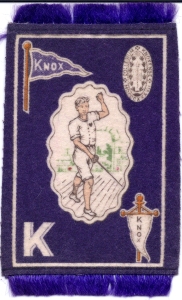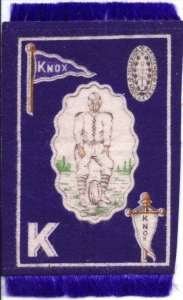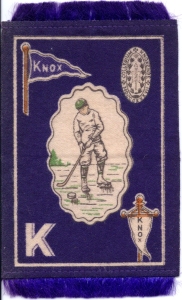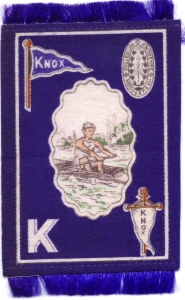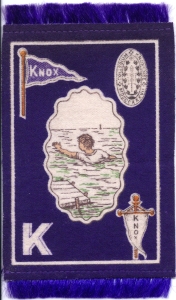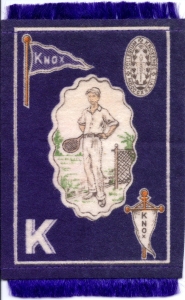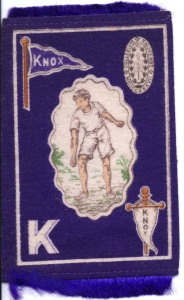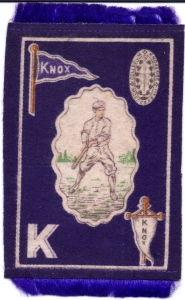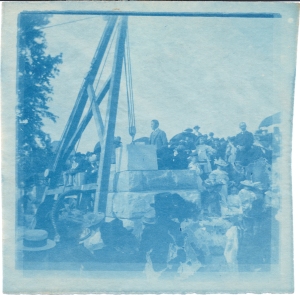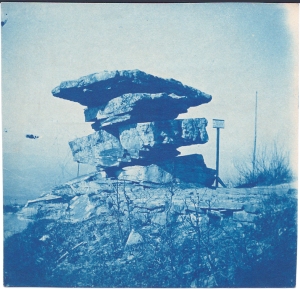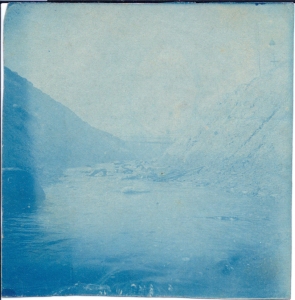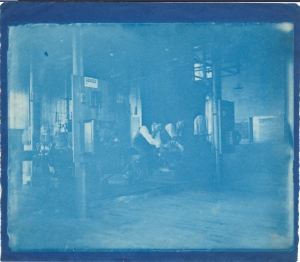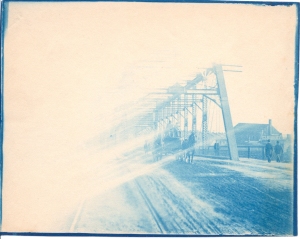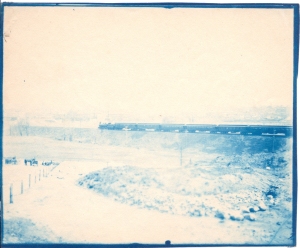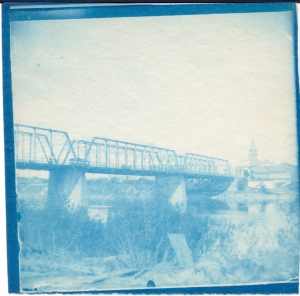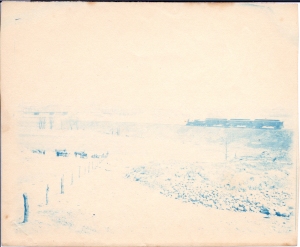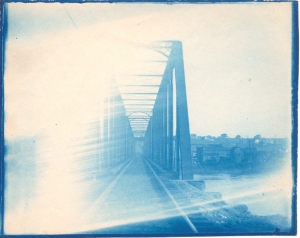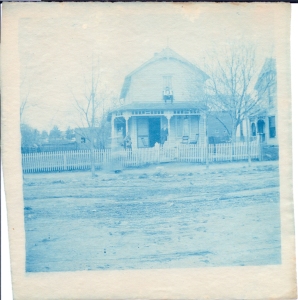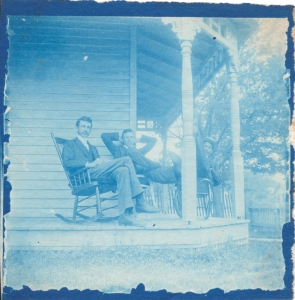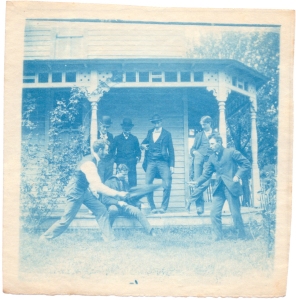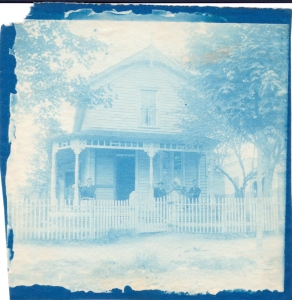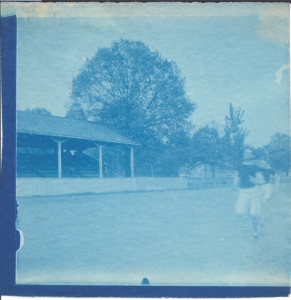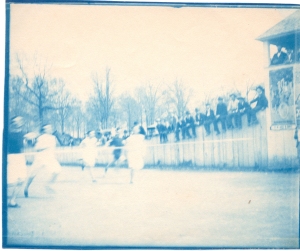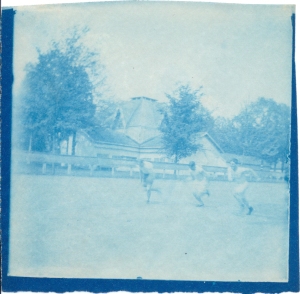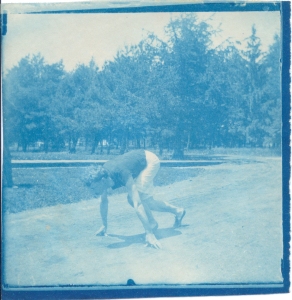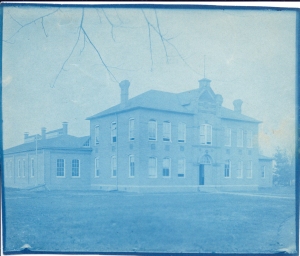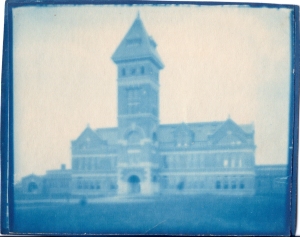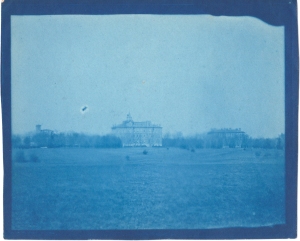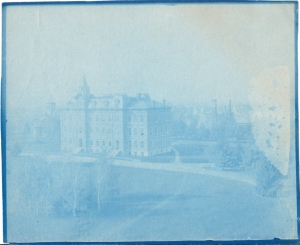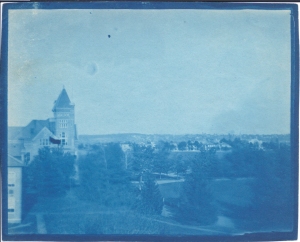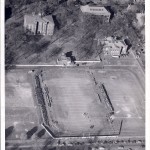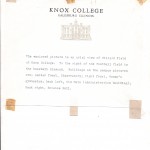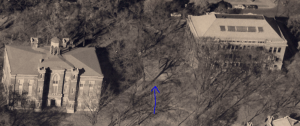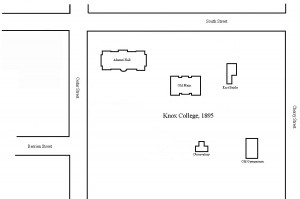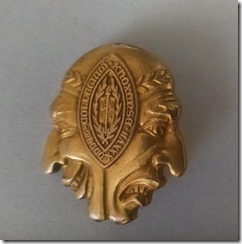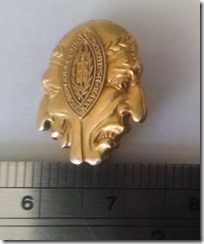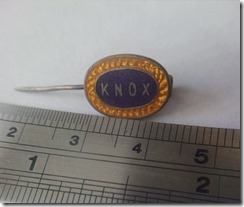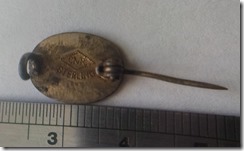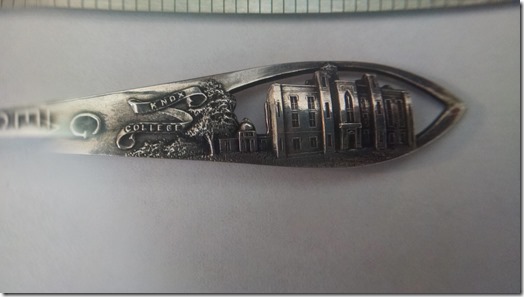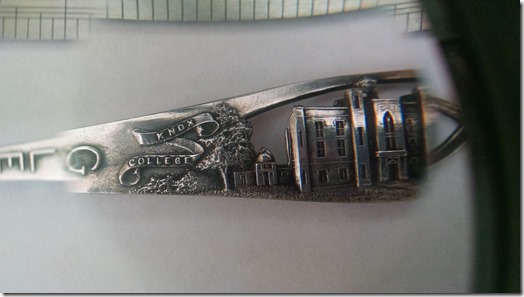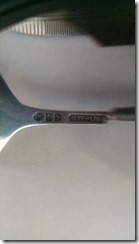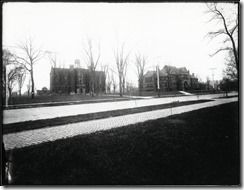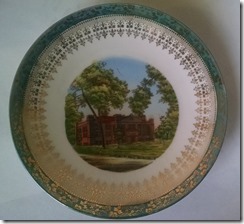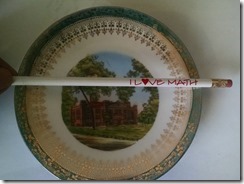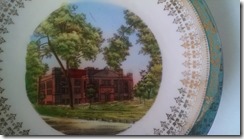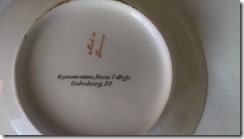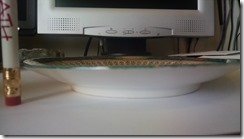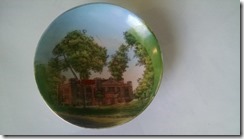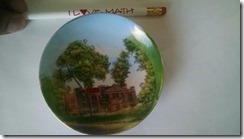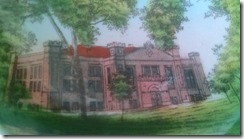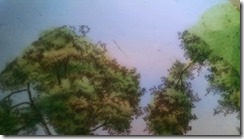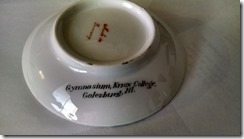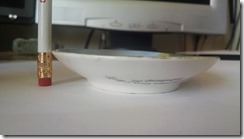I promised on Facebook that the newest addition to my collection was something huge, and I was not lying. Here it is. This is ONLY the larger prints (about 5×7 in for the majority). The smaller prints will be another post. There are approximately 40 prints in all! This is a treasure trove of the Knox community around 1885-1895ish.
Why can I be that precise about the dates? Partially because of the type of pictures they are. These are all cyanotypes, which was a method of photography invented by John Hershel in 1842. This process was cheap and easy to do, and it is why “blue prints” are called “blue” prints. The cyan color is essential to the process.
How do I know these are of Knox? Well, the prints had labels on them saying so. Seriously. Honestly, I have my doubts. Even after looking at them carefully, I see some inconsistencies that make me wonder. I will point them out as I go. All of these photos were purchased in a plastic bag with a cardboard backer. On the cardboard backer, someone has written a description of the picture. Here’s the thing. The bag and backer are clearly comic book storage bags and boards. The pictures were in something in the past that identified them, and at some point in the last 50 years were transferred into the current storage devices.
 As you can see, this is not the most reliable of marking. In fact, if there were not two specific pictures in the group, I would not believe they were really of Knox at all.
As you can see, this is not the most reliable of marking. In fact, if there were not two specific pictures in the group, I would not believe they were really of Knox at all.
So, I am going to give the pictures in no real particular order, but I am going to start with two small pictures, and they are the ONLY pictures that are written on the back (hence I scanned the back as well) AND you can identify the building clearly. At some point, the photographer WAS in Knox County and took pictures of at least the court house. Given that, I do believe the rest are of Knox as well. All of these pictures are dated on the backer board circa 1885.
All of these pictures were scanned at high resolution (300 px) and very high bit-rate to allow for lots of zooming and looking. None of these are watermarked (although some of them have water damage, that is different).
First up, the Court House from two different angles and two different times. In between them the bunting was removed.
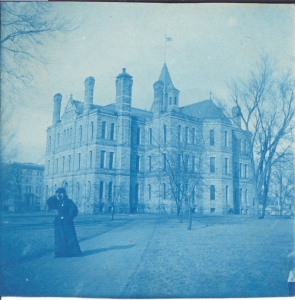
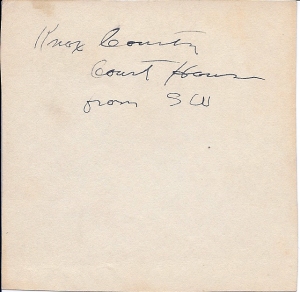
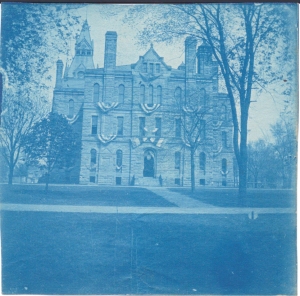
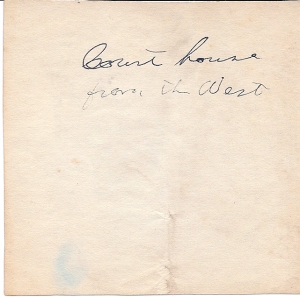
That these are of Knox County Courthouse can not be denied. Zoom in on the left of the picture taken from the South West. You can even see Whiting Hall in the background. You can imagine the woman in the foreground was a student walking from the Women’s College in Whiting to the Main Campus for a class.
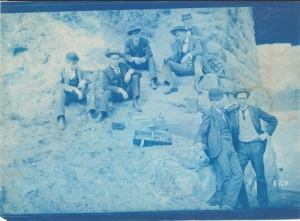 1885 Civil Engineering Class at Knox
1885 Civil Engineering Class at Knox
Looks like they were examining a train trestle? Imagine going to class in a 3 piece suit though? Not me.
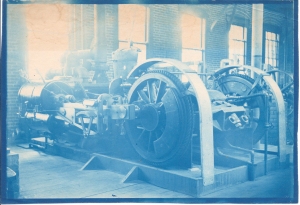 1885 Early Steam Engine at Knox 1
1885 Early Steam Engine at Knox 1
Windows spacing and arches over the windows are consistent with other pictures.
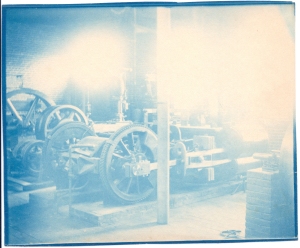 1885 Early Steam Engine at Knox 2 (this picture is washed out by light from the windows.)
1885 Early Steam Engine at Knox 2 (this picture is washed out by light from the windows.)
 1885 Engineering Lab 1
1885 Engineering Lab 1
Notice the 4 (or 6) panel doors. These are common doors throughout the pictures for the most part, with one exception.
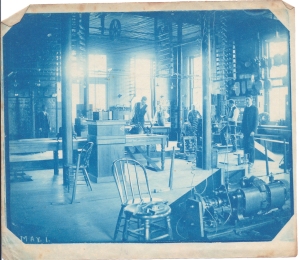 1885 Engineering Lab 2 (smaller and paper backed)
1885 Engineering Lab 2 (smaller and paper backed)
The windows in this picture have the same spacing as the windows above in the steam engine pictures.
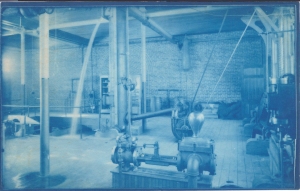 1885 Engineering school pump
1885 Engineering school pump
This has to be in a different room than the previous pictures. A room that has a very high, peaked roof. Also, notice the 9 panel door. Typically a building will not have different types of doors.
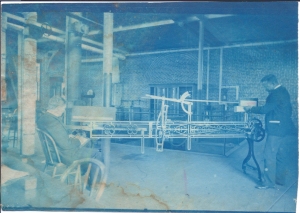 1885 Engineering school – steam model engine
1885 Engineering school – steam model engine
Same room as above picture, but other side. Notice the huge bricked in arch on both sides of the room. Very unusual.
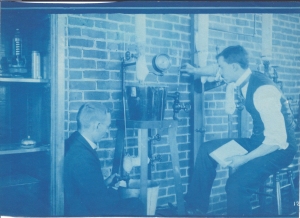 1885 Engineering school – thermal experiment
1885 Engineering school – thermal experiment
This is a thermal experiment, but my only thought was that in winter this room had to be freezing. There was no insulation at all. Those look like external wall bricks. brrr.
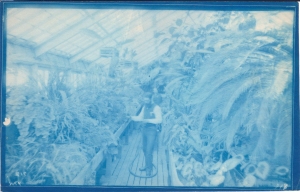
1885 Greenhouse
Did you know Knox had a greenhouse? According to this it did.
The first question in my mind was where could these pictures be taken? What building has many tall, narrow windows, with a short wall space in between? What building had a high peaked roof that could fit the steam engine in it? And, where could the green house be? Only one building, the George Davis Science Hall, built in 1911. Say what?
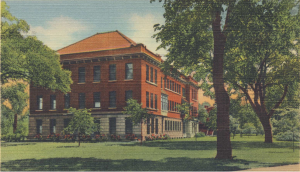
Here is an older image of George Davis Science Hall (the original name of the building, the “Science” has since been moved) and GDH was opened in 1911. There are two small greenhouses attached to GDH that you can see in this picture.
BUT, either the pictures are at Knox and the dates are wrong OR the pictures are not at any building at Knox but a building Knox was using and the pictures are correctly dated OR there are some pictures taken from several different locations and were all mixed up. All in all, I am uncertain if these are at Knox or not. They were sold as is, and attributed to Knox. The Courthouse is right, and the windows are right. I am going to have to spend some time looking at faces to see if any are identifiable.
Right now, I am not 100% confident that these were taken in 1885. GDH is the only building that seems possible, which would make them at least 1911.
With that said, here are two more large pictures (next week, the small ones).
 1891 Mock Civil War encampment 1
1891 Mock Civil War encampment 1
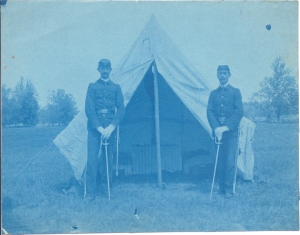 1891 Mock Civil War encampment 2
1891 Mock Civil War encampment 2
I hope you enjoy!







